Millets, Sorghums and Sunflowers
For latest pricing and availability call:
(325) 514-1779 or Email: broncoseedgrain@gmail.com
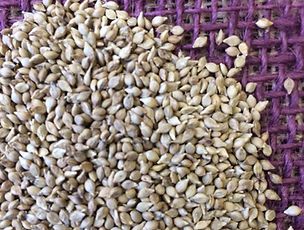.jpg)
Millet, Browntop
Browntop millet is an annual, warm season small grain or cover plant that grows to a height of 2-3’. It is adapted to most upland soil types and can be grown in all regions of Texas. Browntop millet is an excellent cover crop for use with native seed mixes on highly erodible soils, or for areas that must be planted in summer, outside of typical spring or autumn planting windows for most native seeds. Doves, quail, waterfowl, and turkeys relish the seed of browntop millet, making it an excellent choice for game bird foot plots and hunting areas.
Browntop millet makes grain in as little as 55 to 60 days depending on the weather conditions. Best time to plant is March through August. It is low-yielding forage, but has value in forage systems as a nurse crop or to quickly revegetate denuded areas. For dove food plots, browntop millet should be planted in mid-summer.
Planting Rate/acre: 15-20 lbs
Price Per lb
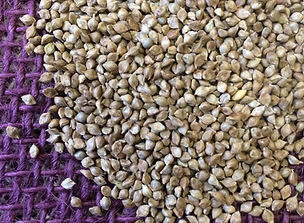.jpg)
Millet, Japanese
Japanese Millet is a warm season, tufted annual grass growing 2 to 4’ tall. It can be grown throughout Texas in wetlands and other moist soils along rivers, ponds, and drainages. It does not grow well on sandy soils. Japanese millet can survive being submersed in water for several weeks at a time. It is used primarily as a forage and wildlife food plot species.
Japanese Millet is commonly planted in the U.S. as feed for waterfowl. It is also a preferred food for pheasants, doves, and turkeys. A number of songbirds also eat the seed.
Planting Rate/acre: 15-20 lbs
Price Per lb
.jpg)
Grain Sorghum, Red
Grain sorghum is a warm season annual crop that can grow to a height of 3-6’. Grain sorghum is broadly adapted to many soils and climate conditions. It provides an abundance of forage and grain for wildlife. Doves, quail, waterfowl, and turkey relish the seeds. Grain sorghum is a common component of food plots for doves and quail. It is also an excellent plant for cover and nurse crops, and for the remediation of extremely saline soils and heavily compacted soils.
Grain sorghum can make grain in 90 to 120 days depending on the conditions. Best time to plant is March through April for spring plantings and June through July for autumn maturity. Summer plantings are generally successful when irrigated.
Planting Rate/acre: 8-15 lbs
Price Per lb
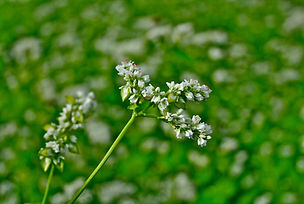
Buckwheat
Buckwheat is a fast growing, annual, broadleaf grain. It establishes very quickly and can reach maturity in as little as 70 to 90 days. Buckwheat is most commonly planted alone as a cover crop for weed suppression or as a quick soil cover for short rotations. Popularly used as a smother crop, buckwheat’s rapid growth leaves little time or sunlight for warm-season annual weeds to grow under its broad and shady foliage. Buckwheat residue decomposes rapidly, releasing nutrients to the next crop very quickly. It is not frost tolerant and will terminate with the first frost. Additionally, Buckwheat is a favorite pollinator crop of honey bees. Honey made from buckwheat flowers creates a dark, robustly flavored honey known to have higher concentrations of anti-oxidant compounds. Wildlife also find the tender shoots quite tasty and whitetail deer will search it out.
Planting Rate/acre: 20-40 lbs
Price Per lb

Sunflower, Black Peredovik
Peredovik black sunflowers are an oilseed crop that are a favorite of bird species. This tall growing plant can reach up to six feet tall and reaches maturity in about 80-100 days. Compared to other sunflower varieties, black oilseed sunflowers are noted for their higher oil content and meatier seeds which provide greater nutrition benefits. Game birds and song birds will flock to these plants as they reach maturity and produce seeds for them to eat. Black sunflowers are a favorite of dove, quail, pheasant, turkeys, and song birds.
Planting Rate/acre: 25-30 lbs
Price Per lb
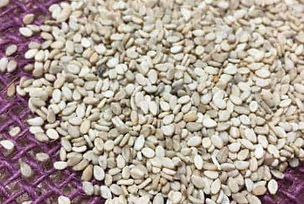.jpg)
Sesame
Sesame is an annual, warm season broadleaf crop that grows 3 to 6 foot tall. Sesame will continue to flower, set seed and shatter throughout the growing season with soil moisture, providing a consistent and long-lasting food source for birds. It is one of the best dove and quail food plot plants for South, Central, and West Texas. Sesame is also used as a cover crop in some areas.
For dove hunting areas, sesame should be planted in May and requires 120-150 days to maturity. Sesame is one of the most drought hardy options for dove food plots, and one of the few options that is tolerant of sandy and acidic soils.
Planting Rate/acre: 8-10 lbs
Price Per lb
For latest pricing and availability call: (325) 514-1779 or Email: broncoseedgrain@gmail.com
.jpg)
Millet, German
German Millet a warm season, tufted annual small grain that can grow to a height of 2 feet. It is broadly adapted throughout the U.S. It can be used for forage, hay crops, cover crops, erosion control, and wildlife plantings. It is a fair forage and the seeds are relished by doves, turkey, and quail.
It has compact cylindrical heads of golden yellow seed at maturity and can make grain in as little as 50 to 60 days depending on the conditions. Best time to plant is March through August.
Planting Rate/acre: 15-20 lbs
Price Per lb

Millet, White Proso
White Proso Millet is a forage crop that's popular not only around the United States, but around the entire world. This can be used as feed for cattle, or forage for deer, rabbit, quail, turkey and dove.
Planting Rate/acre: 10-15 ins
Price Per lb
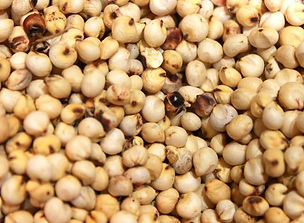
Grain Sorghum, White
An open-pollinated, early maturing, white sorghum bred for cold tolerance. Seed was donated by the Farm Breeders Club from the Northern Plains Sustainable Ag Society. Plants grow short at 4 feet. Excellent standability and drought tolerance. The heads of the sorghum can be harvested for grain, livestock and bird feed, or left standing to attract birds during winter months.
Planting Rate/acre: 8-15 lbs
Price Per lb

Teffgrass (Annual)
Teff’s origin is thought to be Ethiopia, where it emerged as a grain crop for human consumption sometime between 4000 B.C. and 1000 B.C. Teff in the USA is grown primarily as a forage crop for livestock, is adaptable and it can grow in various environments.
It is a fine stemmed, fast growing, high yielding, summer annual grass. But what really makes Teff Grass unique and exciting is its nutrient content. Teff is a “C4 Warm Season” grass with a moderate protein and calorie content, but with a low sugar/starch content.
Teff is an ideal forage and hay crop due to several factors –
Palatability - Teff is fine stemmed, leafy and “soft” which is very palatable to horses.
Low Sugar Solution - The high fiber, low sugar and starch content make this a rescue feed for horses suffering from many, and some debilitating, disease conditions.
Anti-Nutritional Factors - Teff does not have the anti-nutritional compounds like nitrate toxicity and prussic acid that sometimes occur in other grasses (Ketema, 1997, Ketema, et al., 1993).
Fast Growth - Under ideal growing temperatures and moisture, Teff germinates quickly and is ready for early harvest in 45 to 55 days after seeding.
Wide Adaptation - Teff has the ability to thrive in moisture-stressed and waterlogged soils. In areas without irrigation, Teff can provide forage during times of drought.
Versatility of Harvest - Although in most instances Teff forage is baled as dry hay, it can be grazed as well.
Teff Grass is a unique forage with many benefits for horses and their owners, along with those that grow it. Find a Store near you that offers Standlee Premium Teff Grass Pellets, for a consistent, high quality forage option! Give your local farm and ranch retail store a call to see if they’re carrying it or ask them to bring it into their inventory.
Planting Rate/acre: 5-8 lbs
Price Per lb

Sunflower, Native
Native sunflower is, warm season annual forb growing 5-7’ tall with numerous showy yellow flowers. Native sunflowers are adapted to a wide range of soil conditions throughout the Southern U.S. They are an important food source for doves, quail, turkey, and songbirds. Sunflowers are also an excellent pollinator plant. Native sunflower is a common plant for game bird food plots, pollinator plantings, and for ornamental uses.
Due to a high percentage of dormant seed, native sunflowers typically require at least one year of overwintering in the ground to produce a solid stand, so they are often planted in the fall for emergence the following spring. Once established, the species will readily reseed itself and come back year after year with soil disturbances such as fall or winter dicing.
Planting Rate/acre: 5-10 lbs
Price Per lb
%20(PK).jpg)
Croton
(Dove Weed)
Wooly croton or dove weed is a native, warm season annual forb that grows 3-5’ tall. This croton is common on sandy soils, pastures, old fields, and prairies in South, Central, and East Texas. Wooly croton is not grazed livestock, but is a favorite food source of doves, quail, and wild turkeys.
Wooly croton is an excellent plant for dove and quail food plots, and as an addition to diverse native plant seed mixes for restoration plantings to benefit wildlife. Croton should be planted in late spring or early summer for fall maturity. Wooly croton frequently reseeds itself annually with soil disturbance on sites where was planted to.
Planting Rate/acre: 3-5 lbs
Price Per lb